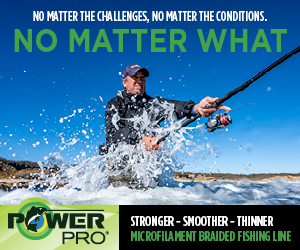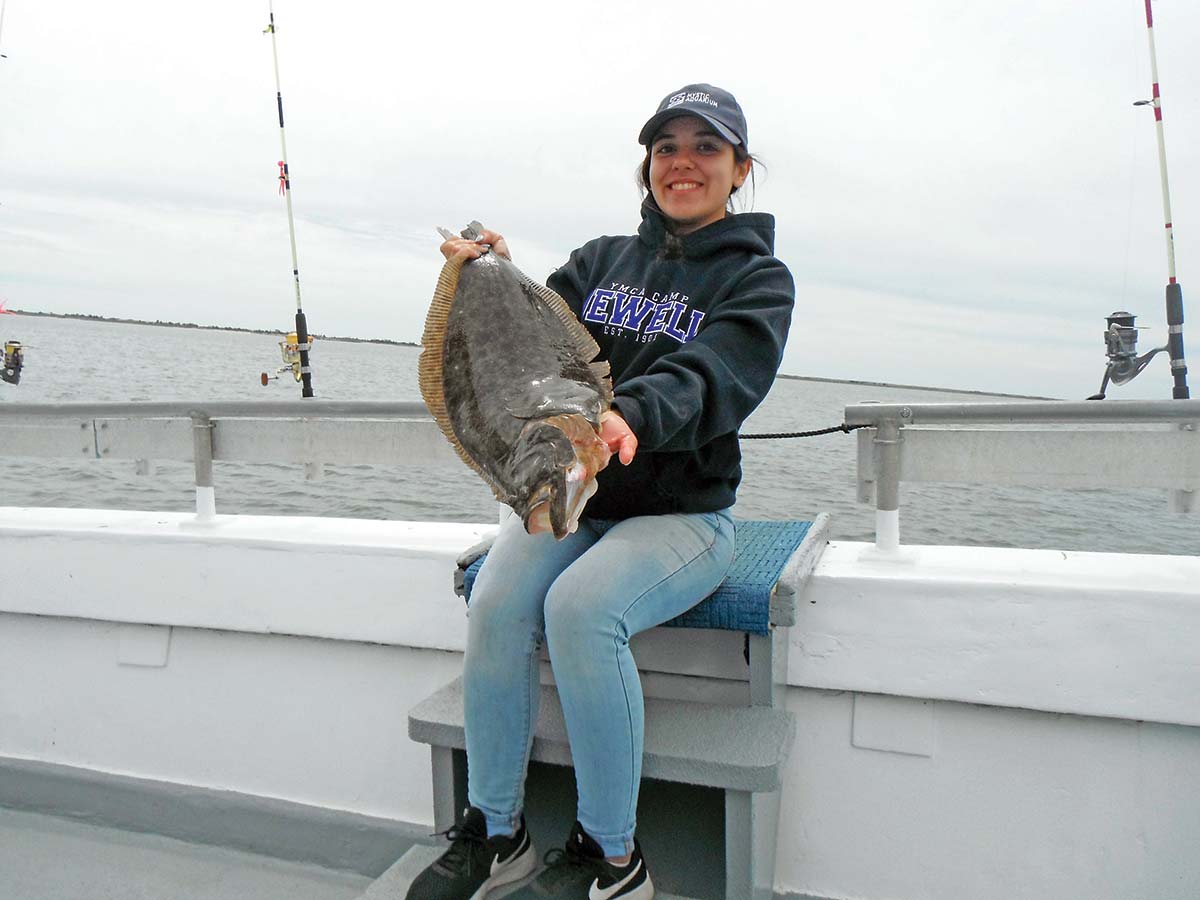
Being able to cast is a big advantage, and light spinning tackle allows you to get good distance and cover more water, despite the handicap of an underhand cast.
I have often preached that when fishing aboard a party boat, look to the mates or captain for advice on how to rig and what baits or lures have been working best. It makes plenty of sense since they are on the water every day and know what tactics have produced best on the days and weeks leading up to your trip. However, there are times when separating yourself from the rest of the crowd just might translate into you catching more or bigger fish than everyone else on board. It could mean decking a pool winner, or simply getting more fun out of the fish you do catch.
The decks of party boats have for the most part been the last place to join the trend to light tackle. It took a long time for the party boat crowd to catch on, but the use of light spinning tackle when targeting fluke on the inshore grounds, and even species like porgies and sea bass, is now commonplace on many boats. There are captains who encourage passengers to bring along relatively light spinning gear, and some even include these outfits in the boat’s rental gear. Yet, there are still plenty of those unnecessarily heavy conventional outfits in play on some boats. Also, some anglers perception of light tackle still finds them using tackle heavier than it needs to be, which can compromise their efforts.
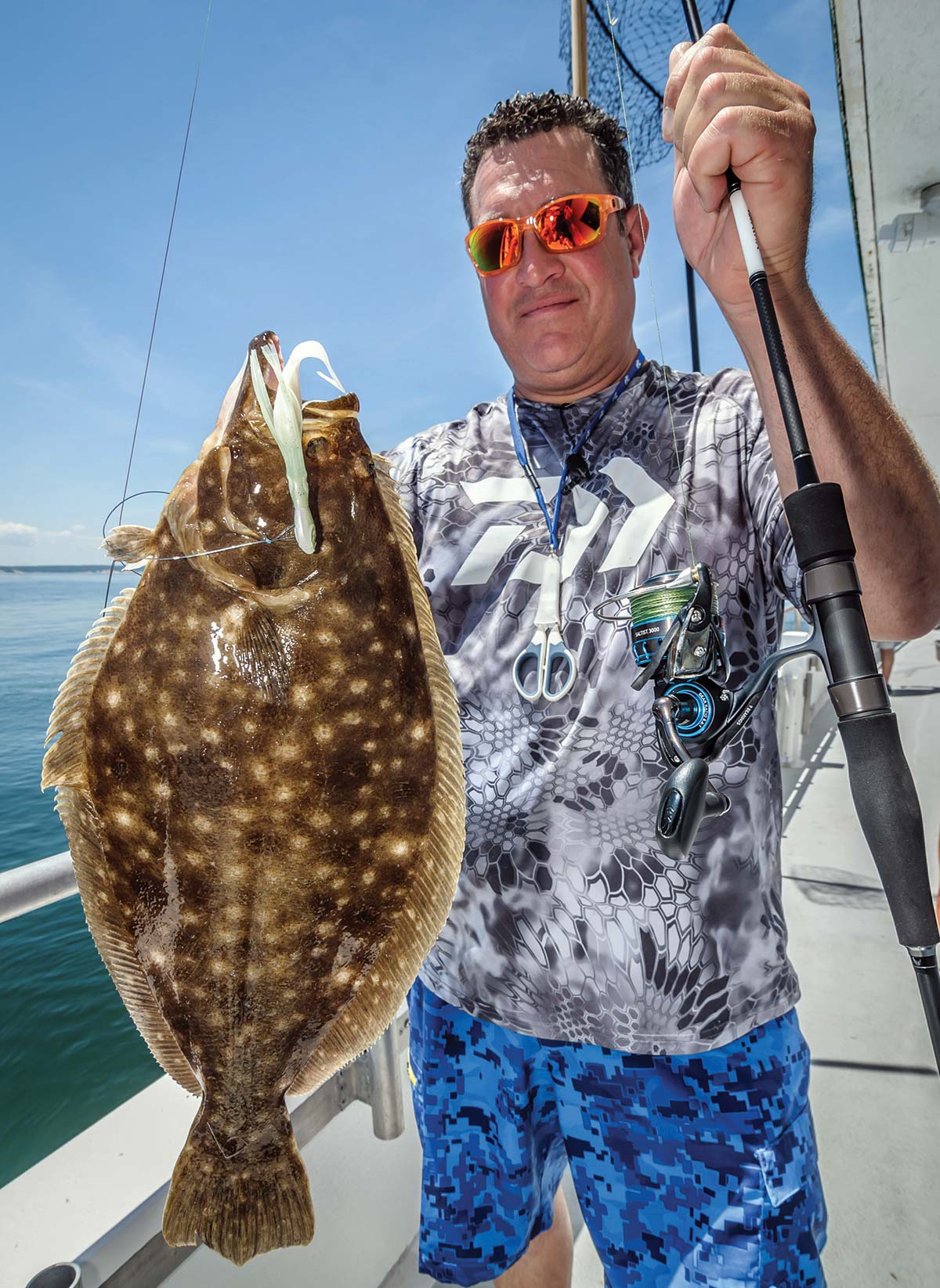
The Casting Advantage
I’ve been a big advocate of light spinning tackle for most fluke fishing situations for decades. It provides numerous advantages, including covering more water, the ability to keep your offering moving, especially when dealing with poor drifting conditions or fishing during slack water periods. By casting underhand and retrieving your offering, it is often possible to catch fluke right through slack tide or in wind against current conditions while other anglers do nothing. Also, the fine diameter lines matched to light spinning outfits greatly reduce water resistance, making for a better presentation and allowing you to get lighter and smaller offerings down into the strike zone.
Being able to cast is a big advantage, and light spinning tackle allows you to get good distance despite the handicap of an underhand cast. Overhead casting raises the risk of someone getting hooked and is frowned upon on open boats for good reason. Getting off longer casts allows you to cover bottom that others on the boat are not. My preferred position on the boat is the tip of the bow. When casting and retrieving bucktails or leadheads, you want to make your cast into the direction of the drift. From the bow position, I can direct my casts to the left, right and straight ahead, covering a variety of drifting conditions. Working off the corners of the stern also gives you more options, but the stern on most party boats is a preferred position that usually draws a crowd. Some captains will change the position of the boat on alternating drifts to allow the lines of fares on each side of the boat to stream away from the boat, rather than under it. If the number of people aboard can be limited to one side of the boat, you then have the opposite side of the boat to cast into the drift, since most anglers will be dragging their offerings in the wake of the drifting boat.
Casting into the drift enables you to keep bucktails and leadheads weighing 3/8 to 1 ounce down on the bottom since you are drifting toward the lure and eliminating any water resistance. Your retrieve should be just fast enough to keep the slack out of your line and move the jig slowly along the bottom with a rhythmic jigging motion. Do not set the hook at the first feel of a bite. Take up any slack and when you feel solid resistance or weight, set the hook.
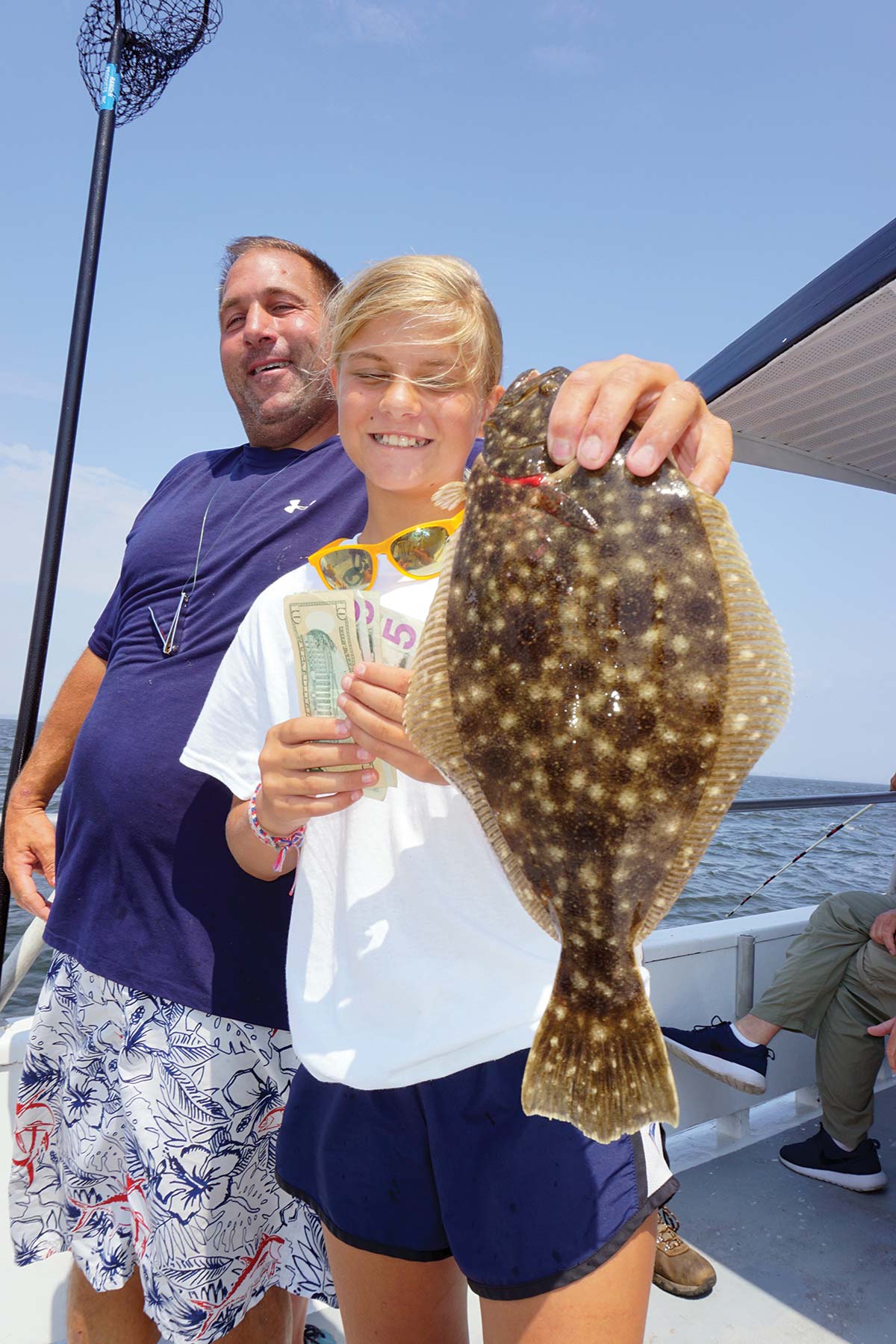
Defining Light Tackle
A medium/light 6 or 6-1/2-foot spinning rod and 2500 to 3000 size spinning reel spooled with 10-pound test braid will put you in the game. My workhorse rod for fluking in bays, sounds and near shore ocean waters is a medium action 6-foot Loomis (SJR 722). I have landed fluke to 8 pounds on this outfit with no problem, and stripers over 30 pounds so you shouldn’t be concerned with being overmatched. If you are uncomfortable with 10-pound test, you can push it to 15 pound, but the lighter line is a definite advantage. At the business end, a three to four foot length of 20-pound test fluorocarbon or mono, connected via a double-uni, modified Albright or a small swivel, serves as your leader. Bucktails and leadheads should always be tied direct to the leader.
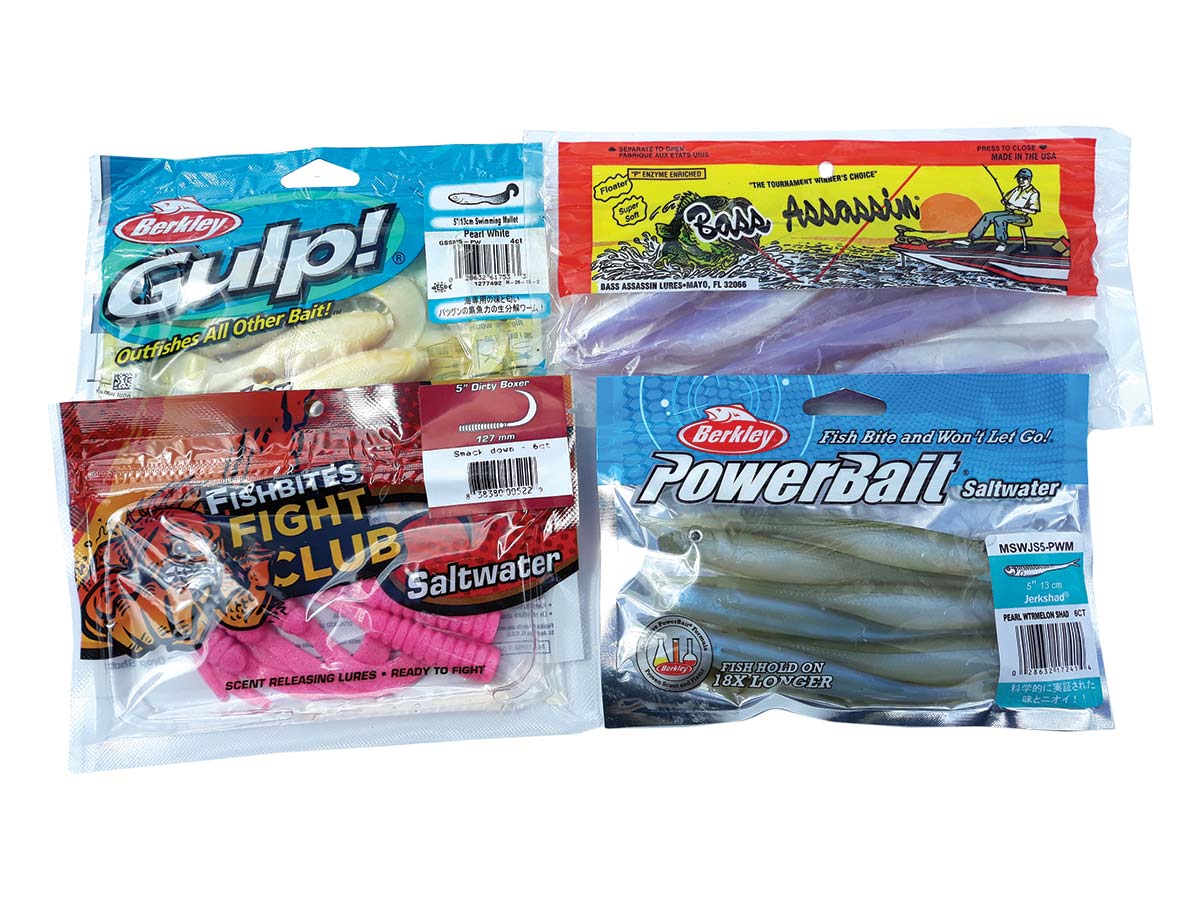
I like to carry a tackle bag aboard party and charter boat trips. In it should be selection of bucktails and plain leadheads ranging from 3/8 to 1 ounce. By now, it is no secret that a variety of Gulp baits are deadly on fluke, along with some more recent entries into the scented soft plastic market. Some friends have had success with Z-Man’s Curly TailZ and PaddlerZ baits. Their six-inch Doormatadorz was specifically designed for targeting fluke in Northeast waters. It is naturally buoyant, infused with Pro-Cure Scent and made with incredibly durable Elaztech Plastic. Since Fishbites introduced their new line of scented baits two seasons ago, I have been hammering fluke with the Dirty Boxer curly tail model. Pink (Smack Down) has been the hot color for me but I’ve also had success with white and green. As for Gulp, I have caught fluke on a wide variety of these Berkley baits, including 4 and 5-inch Swimming Mullet, the 6-inch Sand Eel, Shrimp, Grub and Minnow. White, chartreuse, pink and nuclear chicken have all produced their share of fluke at one time or another. All of the above baits can be fished on a bucktail or plain leadhead. Spro, Premium, S&S, Magic Tail and Andrus are all good choices when it comes to bucktails, and I’ve also had a lot of success with Spro’s Squid Tail Jigs. When selecting leadheads, I have found those with large, visible eyes tend to draw more strikes than those without. You also have the option of rigging one of these soft plastics on a single hook as a teaser two feet above the jig via a dropper loop. A nice aspect to fishing these baits is that sea bass, porgies, striped bass and weakfish are just as susceptible to these offerings as fluke, and it is not uncommon to deck multiple species while targeting summer flatties. And while they might rank low on the glamour list, sea robins also have a fondness for these scented plastics and they make for some good eating.
Other Options
So while this is by far my favorite way to catch fluke, there are other techniques that can be brought into play on party boats, since no one technique will work best all of the time. Many big fluke have been caught on bucktails and leadheads tipped with scented plastics, but before you give up drifting traditional baits like spearing, sand eels and squid, there are times, especially during the early part of the season when water temperatures are on the cooler side, that meat can out-fish artificials. There may even be times during the course of the season when those traditional baits bait may even produce more or bigger fish. These natural baits can all be delivered on the same bucktails used for soft plastics.
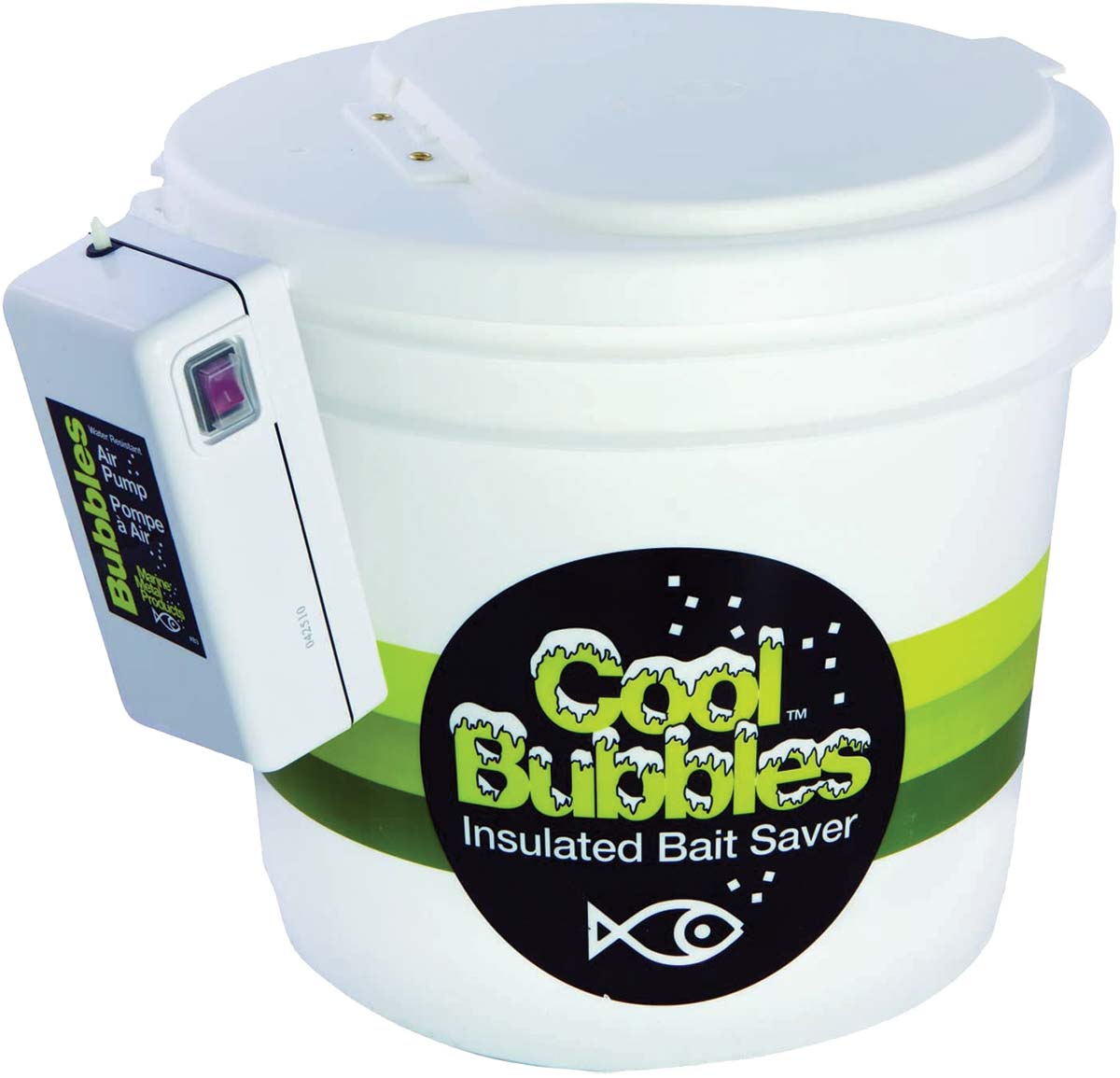
If you are intent on targeting a doormat, or the captain will be fishing in waters known for producing large fluke, there are a number of other options that can make a difference. Using baits like smelt, sold in some tackle shops and in the frozen fish section of many supermarkets, will often attract bigger fluke. The fillets from small bluefish (my favorite and sometimes caught while targeting fluke), mackerel or bunker can be deadly when big fluke are in the neighborhood, and will also eliminate, or greatly reduce bites from undersize fluke and sea robins, giving you a better shot at possibly scoring a pool winner or maybe even that double-digit doormat. Some tackle shops carry frozen mackerel and most tackle shop sells fresh bunker. Whole squid, and large strip baits from sea robins or the belly strips from legal size fluke also make good big fish baits. A pre-trip visit to your local tackle shop just might be the answer to separating you from everyone else on board who are using only baits supplied by the boat.
While I’ve presented baits like bluefish fillets served up on 2 and 3-ounce bucktails with the same light spinning outfit, a better approach for most bait fishing situations where casting is not involved is to opt for a medium/light to medium action baitcasting outfit spooled with 20-pound test braid. Keeping your line on the lighter side combined with the fine diameter of braid will allow you to keep sinker or bucktail weights to a minimum and enable you to feel the lightest pickup as a fluke mouths your bait. This is especially important when fishing in water depths ranging from 30 to 70 feet or more.
The best way to present these larger baits is with a tandem hook rig. There are a number of commercially made rigs available in tackle shops, some featuring a sliding upper hook that allows you to adjust the spacing of the hooks on longer baits. You can also make up your own by snelling two hooks on a length of leader material using a sliding snell for the upper hook, or two fixed snells approximately three inches apart. These larger baits can also be served up on bucktails. Here again I would advise tandem hooks. There are some ready-made bucktails with tandem hooks on the market, but you can easily add a trailing, or stinger hook to your bucktail by tying onto the back end of the eye of the bucktail. Abrasion resistant fluorocarbon of 40-pound test is good insurance against the sharp teeth of a big fluke, while some fluke sharpies favor a short length of piano wire to connect their trailing hook.
The key to presenting any of these baits, including smaller baits like spearing or squid strips, is to make sure the bait lays straight along the hook. Tandem hooks on fillets or large strip baits will help ensure the baits stay straight and keep from spinning. And while we’re on the subject, the same can be said for fishing any soft plastics. Make sure that when you slide them up the shank of the hook they sit parallel to the shank and there is no curl to them.
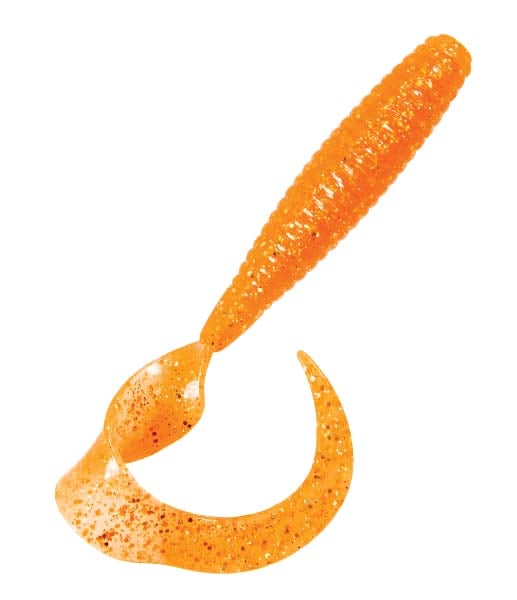
Bringing live baits aboard a party boat is another option that too few anglers take advantage of. Prime fluke baits include snappers, peanut bunker and spots. All are excellent fluke baits and will attract better than average size flatties. Rigging is simple. A drail followed by a three to four foot leader of 30-pound fluorocarbon finished off with a 3/0 or 4/0 light wire hook, or a 4/0 short shank live bait hook, will do the trick. Keep the drail as light as needed to stay on the bottom with a minimum of scope. Plan to acquire these baits before leaving the dock. An increasing number of tackle shops sell live spot. From mid-July into early September, you can often find snappers at, or nearby the same dock the boat is departing from. The same can be said for peanut bunker, and one toss of a cast net can provide an ample supply that you can share with other anglers. Even fresh dead peanut bunker make excellent fluke baits. Purchasing a small, portable, battery powered live bait bucket will keep a few snappers or spot lively enroute to the fishing grounds, and occasionally refreshing the water will help keep them alive longer. Remember that the daily bag limit for bluefish is now three fish, and that includes snappers.
Be alert to opportunity when you are out on the water. Maybe it’s encountering a school of bunker on the fishing grounds, or small bluefish working under birds. In either case, these are excellent opportunities to acquire some prime baits. Be sure that the tackle bag I mentioned earlier contains a bunker snag or two, a couple of small metals like 007s to toss at cocktail blues, and a few small spoons for snappers. In late August and early September, schools of snappers begin moving out of creeks and canals and into bays and harbors. It is not unusual to find schools of baby blues under a cloud of gulls and terns, making them easy targets for a quick supply of live bait.
Bring along some lightweight gear on your next open boat trip, do some pre-trip planning and dare to be different in your approach to party boat fluking. The results should speak for themselves.
